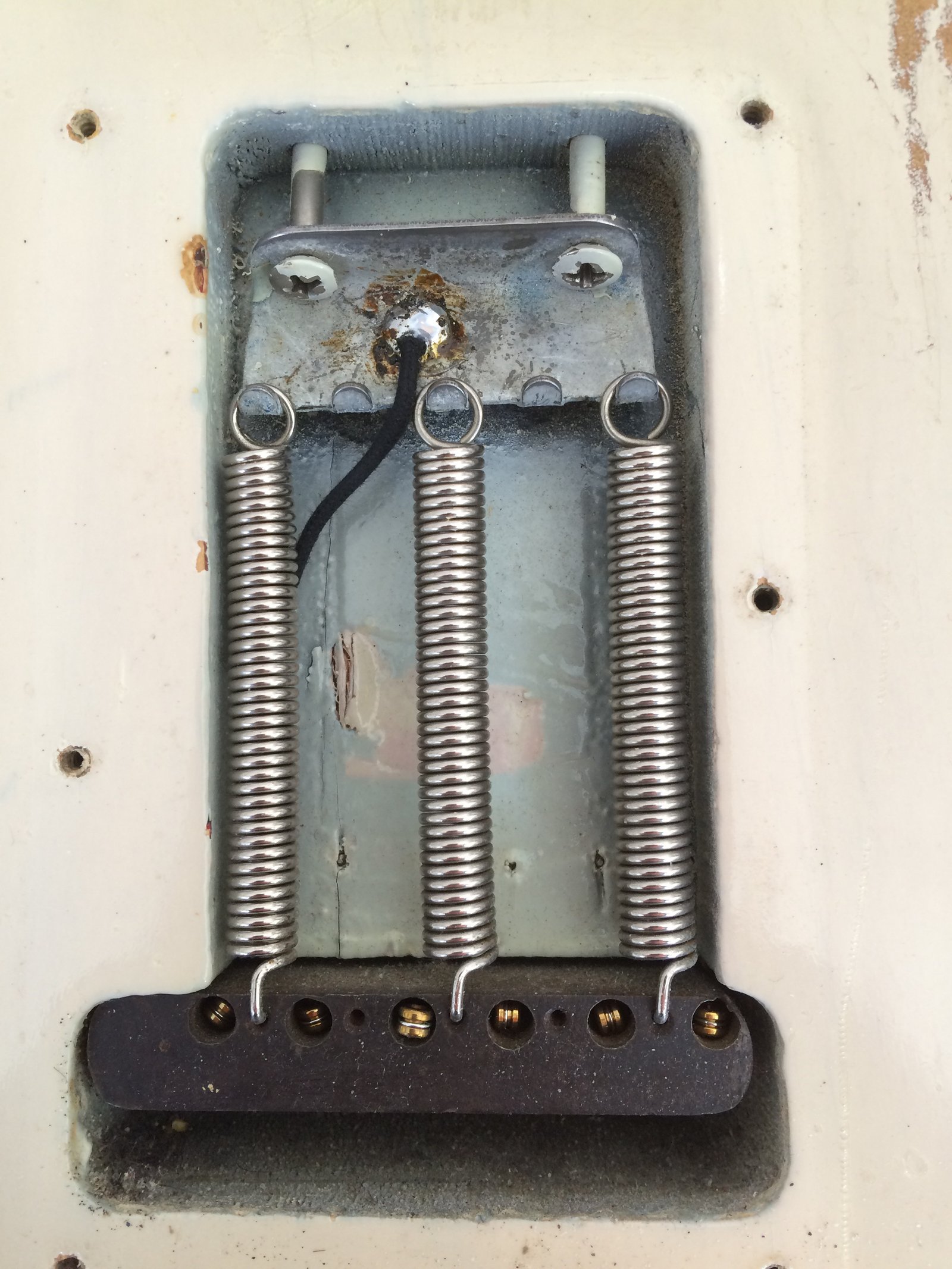Fender Stratocaster 1961
This guitar is probably the first electric guitar I ever saw, this Fender Stratocaster belongs to my father. I was lucky enough to grow up around many great guitars but this one is the first and greatest one of all.
My father doesn’t play much guitar these days but this guitar is his “number one” so it’s got a lot of sentiment to it.
I know this guitar well, as it’s been in my life since I can remember, I was also allowed to restring it a couple of times and as I got older and learned more about Strats, was allowed to service it a few times as well as do some minor repairs.
So, how did my father end up with a pre-CBS Strat? Well, back in 1972 during his college years in Luton he was, like most young guitarists in love with American guitars and rock’n’roll and a real Fender Stratocaster was completely out of his reach.
That was until the JSD band rolled into town in March 1972. One of their roadies used an old and somewhat customised Stratocaster for testing the amps before their shows. My father approached him about the guitar and was told that he could buy it for the princely sum of £30 mainly due to its poor condition and the fact that the guitarist had just treated himself to a Gibson ES-335…

So, my old man needed to find himself £30…and fast.
A friend of his, generously loaned him the money and the deal was done. Dad’s Burns Nu-Sonic guitar had just been replaced.
From what I gather about the guitars finish, it sounded revolting, it had been painted emerald green with a hot dog on the back and various over pot-fuelled artistic visions from the 60’s.
The other issues with the guitar were the mini switches that had been fitted to the pickguard, extra routing inside for switches and a stacked bridge pickup.
Only one pickup of the three worked, the tremolo arm had been snapped in the block and it also needed a refret.
So…not quite the collectors dream. Didn’t matter to my old man, as he had just acquired a genuine Fender Stratocaster!
The night dad carried the guitar, in its Selmer crocodile skin case, he called on his friend Pete Burgess and the pair of them scraped all the pop art paint off the guitars body.
The trend of natural finishes was all the rage at the time so the Strat remained stripped for many years. Whilst stripped, dad noticed that the guitar had a darker edge than the rest of the body…indicating that the guitar began life as a sunburst model. But there’s also traces of fiesta red too. Almost all of the strats that arrived in the UK were sunburst, they were all refinished in red to cater for the trend of the Shadows at the time.
The electrics were “fixed” by a well known electrician named Terry Custance in Luton. He tore out all the original cloth covered wire and replaced it with plastic stuff…cheers.
The guitar was refretted by Emile Grimshaw near Denmark Street in London for £10, the job wasn’t the best and left sharp edges which were later smoothed out in another refret.
Later on in 1986 the job was redone twice more, the final being done by Phil Harris who also refinished the guitar in a thin coat of blonde nitrocellulose, polyester finished the neck and added a new decal.
The body was repaired with filler for the switches and the bridge pickup.
For the broken tremolo arm, the Luton college machine shop drilled the old one out crudely but sorted it so that the trem could be used once again!
The guitar had its machineheads changed numerous times, I remember doing it once in 1999 and perhaps one more occasion, the originals are very used and cause tuning issues.
The guitar was last serviced by me in 2006, so, ten years on…lets have a look inside…

Here’s the guitar before overhaul, the tuners are shot again, so they’re coming off and the guitar is getting a clean and service.


Under the trem springs shows the numerous paint jobs that have been done, even over the screws!

The little fleck of green paint on the bottom of the guard is the remaining paint from the psychedelic job done by the JSD band.


As you can see from these pictures, the neck plate date and the pencil date on the bottom of the neck are correct for 1961, including that very cool slab of Brazillian rosewood on the neck. Beautiful.
The rosewood also has a wonderful two tone to it; one side is lighter than the other.
Also, the neck pocket has that green paint and red from a past life.


After removing the worn machineheads, you can see the extra hole above the D String tuner, this is where Fender hung necks whilst spraying them.
I left the original ferrules as is, to save splitting any lacquer. Plus, it’s nicer to keep it as original as possible.
The guitar now has some reliable Gotoh units fitted.


Under the guard we can see that the volume pot has been changed, this was done by myself back in 2006 along with the Japanese pickups that were currently in use….dad…really.
I changed the volume pot for a CTS one and the pickups for 57/62 Strat ones (as close as we could get)
It’s interesting to see that the tones, cap and switch are all still working perfectly. These are now clean and ready for the next 50 years. The dates on the pots confirm 1960.
The guard is also orignal, one of the famed nitrate models that aged over time and is also prone to shrinkage as you can see on the lower body horn.

It’s always nice to see a note from 1972. Stew Orr…
A real players guitar with a whole world of charm behind it.





